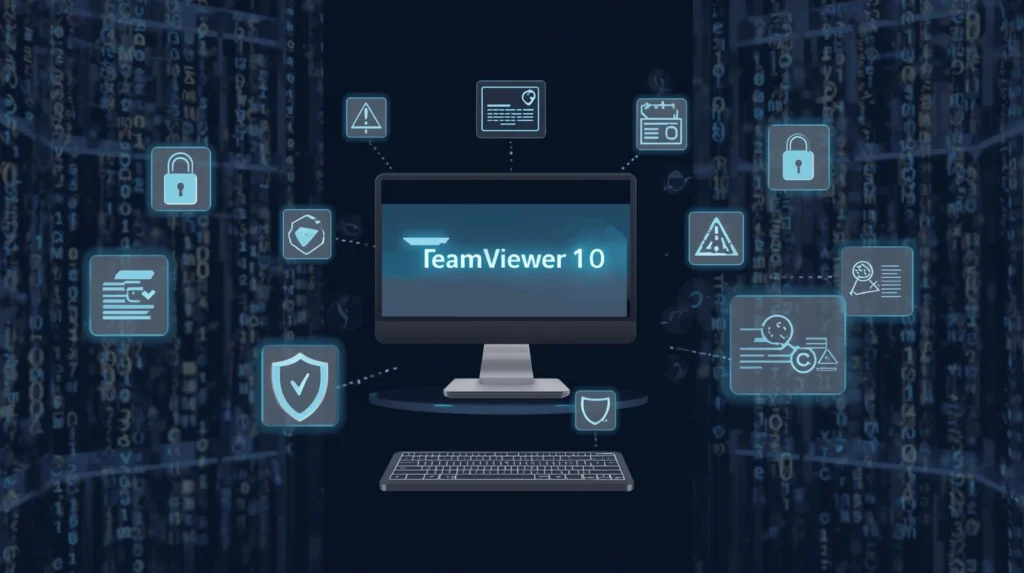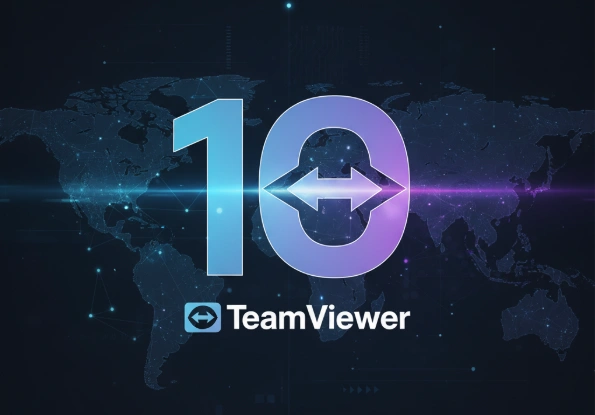TeamViewer 10: What It Was, Why It’s Outdated, and the Best Alternatives Today
Back in 2014, TeamViewer 10 was a huge step forward for remote access and collaboration. It made it easy for people to control computers from anywhere, share files quickly, host online meetings, and provide IT support without being in the same room. At the time, it was considered cutting-edge. But as technology has advanced, it has become outdated, unsupported, and risky to use. If you’re still holding onto it, this guide will walk you through what made it special, why it’s no longer safe, and what modern alternatives are worth considering.
A Look Back at TeamViewer 10
When TeamViewer 10 launched in late 2014, it quickly became one of the most popular tools for both businesses and individuals. Families could help relatives fix tech problems from miles away, while companies gained a simple way to provide remote support to employees and clients. One of its standout features was automatic device discovery, which allowed nearby devices to appear instantly, making connections faster and less complicated. It was also one of the first versions to include stronger collaboration tools like group video calls and integrated cloud storage. For many people, this was their introduction to the world of remote desktop software.
Key Features That Defined TeamViewer 10
Even though it has been surpassed by newer releases, TeamViewer 10 offered a range of features that made it highly useful. On the collaboration side, it included a unified chat window with end-to-end encryption, typing indicators, and message history. Users could also start one-click video calls and add profile pictures to make identifying team members easier. A whiteboard tool let users draw and annotate directly on shared screens, while cloud integration with Dropbox, Google Drive, and OneDrive made file sharing seamless. From an IT and performance standpoint, TeamViewer 10 introduced centralized policies and whitelisting for admins, improved CPU efficiency, and support for 4K monitors. Security was also a focus, with automatic idle session timeouts to prevent unauthorized access. These features might sound basic today, but at the time they were forward-thinking and set the stage for remote collaboration as we know it.
Why TeamViewer 10 Is Now Obsolete
The biggest issue with TeamViewer 10 today is that it is no longer supported. Official support ended on June 1, 2021. That means no more updates, bug fixes, or security patches. Since then, it has lost the ability to connect over the internet, working only within local networks. For most users, this makes it practically unusable. Even if you can still install it from archived sources, you’re opening yourself up to major security risks. Hackers often target outdated software because vulnerabilities are never fixed once support ends. Running this program in 2025 is a gamble that could compromise your data, your business, or your privacy.
How Secure Was TeamViewer 10?

To give credit where it’s due, it had solid security for its time. It used RSA key exchange for establishing secure handshakes and AES 256-bit encryption to protect session data. Passwords were temporary, resetting after each session or system restart. The software also supported whitelisting, blacklisting, and trusted devices, which gave users control over who could connect. It even introduced progressive login delays to deter brute-force attacks. On top of that, visible notifications and an always-active system tray icon made it clear when a session was active. But standards change quickly. The protocols and encryption methods that were considered secure in 2014 no longer stand up to today’s cyber threats. Without updates or patches, the security of TeamViewer 10 cannot keep up with modern demands.
Why It’s Time to Upgrade
If you’re still using TeamViewer 10, you’re missing out on critical improvements that come with newer versions or modern alternatives. Today’s remote access software offers multi-factor authentication, stronger encryption, advanced file sharing, and optimized performance across platforms. They also provide ongoing updates, which means vulnerabilities are patched quickly. Compatibility is another factor. It wasn’t built for Windows 11, macOS Ventura, or the latest Linux distributions. It struggles with high-resolution and multi-monitor setups, making it inefficient for modern workflows. The bottom line is simple: upgrading ensures you get stronger protection, more reliable connections, and better tools for both business and personal use.
Best Alternatives to TeamViewer 10
If you’re ready to move on from TeamViewer 10, you have plenty of great options. AnyDesk is one of the fastest and most efficient tools, designed by former TeamViewer engineers. Its lightweight design and low latency make it ideal for both personal and professional use. Splashtop is another strong choice, offering smooth performance and excellent video quality, especially for larger organizations. For those who want something free and easy, Chrome Remote Desktop is a browser-based solution that works well for occasional access. If privacy is your top concern, RustDesk is an open-source platform that lets you host your own server for complete data control. Businesses looking for advanced IT tools may prefer Zoho Assist, which integrates into the wider Zoho ecosystem, or ConnectWise ScreenConnect, designed for managed service providers. For industries that demand the highest security, BeyondTrust Remote Support delivers enterprise-level safeguards. Even Microsoft Remote Desktop, included with Windows, remains a practical option for users working within the Windows environment.
Conclusion
TeamViewer 10 played an important role in shaping how people approached remote access and online collaboration. In 2014, it felt modern, secure, and easy to use. Features like unified chat, video conferencing, and cloud storage integration made it one of the most popular remote desktop solutions of its time. However, in today’s world, TeamViewer 10 is outdated and insecure. Without support or updates, it is no longer a safe choice for anyone handling sensitive information or relying on dependable connections. If you value security, compatibility, and performance, it’s time to upgrade. Whether you choose the latest version of TeamViewer or an alternative like AnyDesk, Splashtop, or Zoho Assist, you’ll gain a modern tool designed for the demands of remote work in 2025. In short, this program deserves recognition for its impact, but it should stay in the past. The future belongs to faster, safer, and more advanced remote access solutions.
FAQS
Q1: Is TeamViewer 10 still safe to use?
No, TeamViewer 10 is no longer supported, and using it poses significant security risks due to unpatched vulnerabilities and outdated protocols.
Q2: Can I still download TeamViewer 10?
Officially, TeamViewer 10 has been removed from the TeamViewer website. It can only be downloaded from archived sources, which may not be secure.
Q3: What operating systems support TeamViewer 10?
TeamViewer 10 was compatible with Windows 7 SP1 (64-bit), Windows Server 2008 R2 (64-bit), and macOS versions available at the time of its release.
Q4: What are the best modern alternatives to TeamViewer 10?
Popular alternatives include AnyDesk, Splashtop, Chrome Remote Desktop, RustDesk, Zoho Assist, ConnectWise ScreenConnect, BeyondTrust Remote Support, and Microsoft Remote Desktop.
Q5: Why should I upgrade from TeamViewer 10?
Upgrading ensures stronger security, better compatibility with modern devices, improved performance, ongoing updates, and access to advanced collaboration tools.







